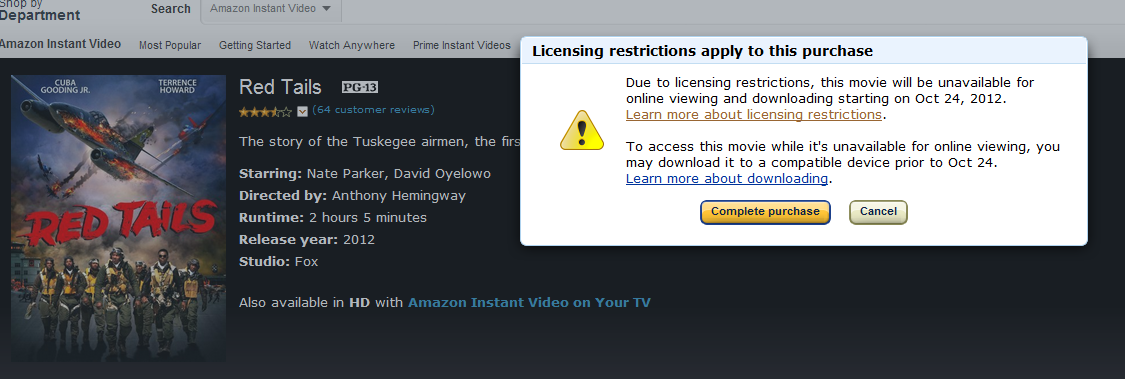The concept of Amazon Instant Video is undeniably appealing – a digital library where you can purchase and store your favorite movies and TV shows. However, a closer look at the current licensing model reveals significant limitations that undermine the very purpose of digital ownership.
The Current Reality
When purchasing a movie like “Red Tails” through Amazon Instant Video, customers face an unexpected restriction: they must download and store the content before a specific expiration date, or risk losing access to their purchase. This limitation fundamentally contradicts the promise of a permanent online video library, raising serious questions about the value proposition of digital purchases.

The Core Issue
The current licensing model creates a paradox in the fight against piracy. While movie studios and streaming services invest heavily in anti-piracy measures, they simultaneously implement policies that make legitimate purchases less attractive. When consumers can’t rely on permanent access to their purchased content, it undermines trust in the digital marketplace and potentially drives users toward alternative, unauthorized sources.
A Better Approach
The solution lies in reimagining digital ownership. When a customer purchases a movie, they should receive permanent access to that content in their chosen format (SD or HD). This doesn’t mean abandoning all licensing controls – device limitations and streaming restrictions can remain in place. However, the purchased content should always be available in the customer’s online library.
The Future of Digital Media
The industry should embrace a more flexible upgrade model. When new formats emerge, customers could upgrade their existing purchases for a nominal fee. For example, a $10 SD purchase could be upgraded to HD for an additional $2. This approach would allow for bulk upgrades across a customer’s entire library, making the transition to new formats seamless and affordable.
This model would benefit both consumers and content providers. It would reduce production costs by moving away from physical media, while providing customers with a more valuable and flexible digital ownership experience. The focus should shift from temporary access to permanent ownership, with reasonable upgrade paths for new formats.
The Prime Alternative
While the current purchase model has its limitations, Amazon Prime offers a different approach worth considering. The service provides access to a substantial library of content through a monthly subscription, similar to Netflix. While the selection might not be as extensive as Netflix’s catalog, it’s a viable option for regular viewers.
The subscription model, combined with Prime’s other benefits like free two-day shipping, presents a compelling value proposition. This approach aligns better with modern viewing habits, where most content is watched once or twice rather than collected permanently.
Moving Forward
The movie industry’s battle against piracy won’t be won through restrictive licensing or temporary access. Instead, success will come from providing better value and convenience than unauthorized sources. This means embracing permanent digital ownership, reasonable upgrade paths, and subscription models that match how people actually consume content.
The future of digital media should focus on building trust with consumers through transparent policies and permanent access to purchased content. Only then can the industry hope to compete effectively with piracy while meeting the legitimate needs of their customers.